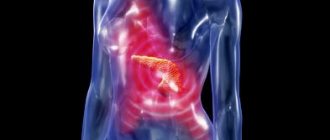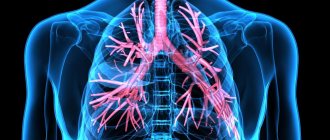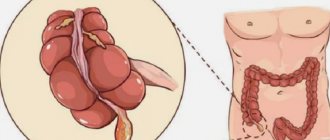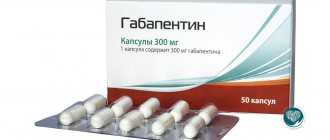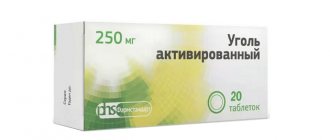Nausea is not a separate disease, but only a subjective, unpleasant symptom that indicates problems in the body. And it does not always occur only with digestive problems. Nausea often precedes an attack of vomiting and can occur against the background of abdominal pain and diarrhea, as well as headaches, high blood pressure and head trauma. To choose remedies that will effectively eliminate nausea, it is necessary to determine the cause of its development, which only a doctor can do. Therefore, if nausea occurs frequently and is accompanied by other symptoms, you need to make an appointment with a specialist and undergo an examination, after which he will select safe and effective anti-nausea pills for adults. You cannot do this on your own; the drugs are quite strong and may have side effects.
To suppress nausea, drugs of several groups are usually used, which affect the center of nausea and vomiting in the brain through different mechanisms. The choice of the best anti-nausea pills for adults is made by a doctor, taking into account specific symptoms, possible causes and additional complaints, age and existing concomitant diseases.
The best anti-nausea and vomiting medications for adults.
December 13, 2022
8433
4.9
1
Content
- How to choose the right pills for nausea and vomiting
- Causes of nausea and vomiting
- Top 5 proven drugs for nausea and vomiting
- Passazhiks
- Motilium
- Domperidone
- Motilak
- Cerucal
Nausea and vomiting are very unpleasant symptoms; they happen for various reasons: infections, intoxication of the body due to food poisoning, etc.). To relieve these symptoms, anti-nausea and vomiting pills are usually prescribed. We have compiled a list of the most effective and safe such drugs.
Read also: Top 5 best sorbents for poisoning Rating of the most effective and safe sorbents that help with poisoning and hangover syndrome.
Classification
When systematizing the forms of nausea, its duration, features of onset and mechanism of development are taken into account. Based on the duration of discomfort, episodic and permanent forms of the disorder are distinguished. Episodic nausea usually occurs suddenly and may or may not be related to food. More often it appears due to errors in nutrition, poisoning, and other acute conditions. Constant nausea of varying intensity is more typical for damage to the central nervous system and chronic diseases. Depending on the pathogenesis, the following symptom options are distinguished:
- Central (cerebral) nausea
. Based on stimulation of the vomiting center in pathology of the nervous system. It is observed in cases of inflammatory or tumor damage to the substance and membranes of the brain, traumatic brain injuries, and hypertensive crises. It may occur suddenly or bother the patient for a long time. After vomiting, the condition, as a rule, does not improve, but often worsens. - Toxic nausea
. Associated with activation of the vomiting center due to irritation by exo- and endotoxins of the chemoreceptor zone in the bottom of the fourth ventricle. It is observed in case of poisoning with drugs, toxic products and substances, toxic metabolites in liver and kidney failure, radiation sickness, ketoacidosis in patients with diabetes. The intensity of the symptom depends on the severity of intoxication. - Reflex nausea
. Caused by irritation of the receptor apparatus of the nervous chain of the gag reflex. Nerve endings that stimulate the appearance of nausea are located in the root of the tongue, the posterior wall of the pharynx, the stomach, the ileocecal zone, the intestines, the pancreas, the hepatobiliary system, the peritoneum, the inner ear and other organs. It is most often associated with food intake and manifests itself in the structure of gastrointestinal diseases. - Vestibular (motor) nausea
. It is provoked by a change in body position, direction or speed of movement with irritation of the vestibular apparatus and stimulation of the vomiting center. In a healthy person, it occurs in the form of motion sickness when driving a car or rotating the body. Characteristic of brain pathology with damage to the inner ear, cerebellopontine angle and vestibular stem nuclei. - Psychogenic nausea
. Observed during the implementation of a firmly established conditioned reflex. Triggers of nausea are olfactory and visual sensations that cause disgust or unpleasant emotions. It often manifests itself in neurotic and neurosis-like conditions, psychogenic disorders, overwork, and conflicts. It can serve as a somatoform manifestation of depression and psychotic disorders. - Exchange nausea
. Develops due to disturbances in the physiological transformation of nutrients against the background of vitamin, mineral, and endocrine deficiency. It is probably realized through the influence of metabolites on the receptor zone of the medulla oblongata and activation of nerve endings against the background of secondary damage to the gastrointestinal tract. Identified in patients with hypothyroidism, hyperfunction of the parathyroid glands, premenstrual syndrome, etc.
How to choose the right pills for nausea and vomiting
Before choosing an antiemetic, you need to know the cause of this symptom and whether the condition requires treatment, as well as possible side effects. What medications are there for vomiting and nausea?
- Anti-nausea and vomiting medications for adults and children undergoing chemotherapy (glucocorticoids, histamine receptor blockers).
- Anti-motion sickness tablets (here you can use homeopathic remedies, anxiolytics, antihistamines, anticholinergics).
- Drugs for nausea and vomiting due to poisoning and gastrointestinal disorders should be selected taking into account the provoking infection. You need to take into account accompanying symptoms: fever, diarrhea, pain.
- You should not take antiemetic drugs for intestinal obstruction, appendicitis, strangulated hernia and other problems that require urgent surgical treatment.
There are not many anti-vomiting medications approved for children and pregnant women. Any pills for nausea and vomiting should be prescribed exclusively by a doctor. Indeed, in some cases such means are needed to prevent dehydration, while in others they are prohibited, because the body gets rid of infection through vomiting.
First aid for a child
It is important for adults who do not have medical training to understand that they cannot, do not know how, and should not make a diagnosis, assess the severity of the condition, or treat a child who is vomiting. Their task is to prevent complications and alleviate the condition, nothing more. And to solve it there are several successive stages.
Avoid scheduled and unscheduled feedings. No matter how obvious this point may seem, it still needs to be mentioned. If a baby is vomiting, he should not be fed, and it is especially important to tell grandparents this. It is they who often think that nausea provokes hunger, and by hook or by crook they try to convince the baby to eat at least a little.
On the other hand, the sufferer himself can try to benefit from his condition by asking for candy or cake.
The answer is to master your parental instincts and gently but firmly explain that putting any food into the stomach of a person who is vomiting can trigger another attack.
The younger the child is in age and weight, and the more strongly he vomits, the faster exicosis occurs (that is, dehydration) - a condition dangerous to the health and even the life of the baby. To prevent it, it is necessary to ensure that the body receives clean drinking water and salts, which are inevitably lost during vomiting.
Drink actively, abundantly, and even against desire.
The most preferred group of products are powdered pharmaceutical products for oral rehydration with sodium, potassium and other substances in specially selected proportions: Rigidron, Humana Electrolyte, Glucosolan, etc. These medications are recommended to be taken without a doctor’s prescription for poisoning, heat and sunstroke, allergies, fever , so it is highly advisable that they are always in the first aid kit
Causes of nausea and vomiting
Main causes of nausea and vomiting:
- vestibular, neurogenic problems;
- entry of viruses into the gastrointestinal tract;
- diseases of internal organs;
- treatment with certain medications;
- food poisoning;
- pregnancy;
- poisoning of the body with toxins;
- mental disorders.
Causes of nausea: pathological and non-pathological
Read also How to treat gastritis: 8 best drugs The best drugs for gastritis: reducing acidity, eliminating excess acid and fighting Helicobacter pylori.
Types of infection
Food contamination is usually caused by bacteria, but can sometimes also be caused by viruses or parasites. Some of the main options.
Campylobacter. In our country, Campylobacter bacteria are the most common cause of food poisoning. The bacteria are commonly found in raw or undercooked meat (especially poultry), unpasteurized milk, and untreated water. The incubation period (the time between eating contaminated food and the onset of symptoms) of food poisoning caused by Campylobacter is usually two to five days. Symptoms usually last less than a week.
Salmonella. Salmonella bacteria are often found in raw or undercooked meats, raw eggs, milk and other dairy products. The incubation period usually ranges from 12 to 72 hours. Symptoms usually last four to seven days.
Passazhiks
This drug has an ideal price-quality ratio. The active substance is domperidone. Passazhix is prescribed for nausea and vomiting for various reasons; the drug is effective for a feeling of fullness in the epigastrium, for delayed gastric emptying, for belching, flatulence, and heartburn. This new generation remedy works comprehensively, eliminating other negative symptoms. Passazhix has a minimum of contraindications and side effects.
Passazhiks
Obolensk pharmaceutical enterprise, Russia
Thanks to the drug Passazhix, the contents of the stomach are evacuated in a timely manner, which relieves heaviness in the stomach and bloating, and prevents its reflux into the esophagus - belching and heartburn are prevented.
from 112
5.0 7 reviews
679
- Like
- Write a review
Polysorb for poisoning
Before you start using Polysorb for children, the instructions for use of this medication should be thoroughly studied. It is unacceptable to use the medicine on your own for a long time. If a child has complaints or you think that he needs Polysorb, then you should first contact a specialist. It is often prescribed in combination with other drugs.
The drug is produced in free-flowing powder form. Polysorb is packaged in different volumes.
At the pharmacy you can purchase medicine weighing from 3 to 50 grams. The minimum amount of medication (one sachet) costs approximately 20 rubles. The price of a large can ranges from 300 to 400 rubles. You can purchase the product without a prescription. The drug Polysorb is considered a safe medicine (children can also use it).
Polysorb powder against poisoning for children, as it turns out, is the best remedy. The fact is that the medication begins to work within the first four minutes after administration. Poisoning often occurs due to eating stale food. Its symptoms are known to everyone: nausea, vomiting, diarrhea.
The child may also have a fever due to the effects of toxins. In this situation, it is very important to start treatment as soon as possible. For babies weighing up to ten kilograms, the medication is prescribed half or a whole teaspoon per day. In case of acute allergies and poisoning, the portion can be increased to one and a half teaspoons. Since the daily volume of the drug is divided into 3-4 times, it is necessary to give the baby 0.5 teaspoon of powder.
Motilium
This potent drug has long won the trust of patients. The active ingredient of the drug is domperidone. Motilium is prescribed for nausea and vomiting; it accelerates the elimination of stomach contents into the intestines and improves the tone of the lower esophageal sphincter. The drug reduces heaviness in the stomach, helps with belching, flatulence, pain in the upper abdomen, heartburn, regurgitation with or without stomach contents.
Motilium
Janssen-Cilag, UK
A complex of dyspeptic symptoms, often associated with delayed gastric emptying, gastroesophageal reflux, esophagitis: - a feeling of fullness in the epigastrium, early satiety, a feeling of bloating, pain in the upper abdomen;
- belching, flatulence; - nausea, vomiting; - heartburn, belching with or without stomach contents. Nausea and vomiting of functional, organic, infectious origin, caused by radiotherapy, drug therapy or diet disorders. A specific indication is nausea and vomiting caused by dopamine agonists when used in Parkinson's disease (such as levodopa and bromocriptine). from 360
5.0 1 review
732
- Like
- Write a review
general characteristics
Patients characterize nausea as a painful sensation in the mouth, throat, along the esophagus, in the epigastrium, accompanied by a desire to induce vomiting or the urge to vomit.
In addition to discomfort in the gastrointestinal tract, there is often excessive secretion of saliva, an unusual taste in the mouth, coldness of the extremities, sweating, hyperhidrosis of the palms and feet. Characterized by weakness, dizziness, darkening of the eyes, unsteady gait. Compression may be felt in the epigastrium. From the outside, patients look confused, uncertain, pale, and sweaty. In some cases, a connection between nausea and food is revealed. In case of dietary errors, mild poisoning, and a number of gastroenterological diseases, the patient’s condition may improve spontaneously or after vomiting. Constant nausea lasting longer than two days is an indication for consultation with a gastroenterologist or therapist. The combination of nausea with thoracic, abdominal and headache, vomiting of blood or coffee-ground-colored masses, black tarry stools, hyperthermia over 38 ° C, convulsions, lack of urine, confusion is a sufficient reason to seek emergency medical help.
Domperidone
These tablets for nausea and vomiting have virtually no contraindications or side effects, so they are well tolerated even by children. "Domperidone" helps relieve attacks of vomiting during intestinal infections. The drug also relieves abdominal pain and improves overall well-being. "Domperidone" is prescribed for biliary dyskinesia, hypotension and atony of the stomach and intestines after surgery, for cholecystitis, reflux esophagitis, and flatulence.
Domperidone
OZON, Russia
Nausea and vomiting of various origins (including against the background of functional and organic diseases, infections, toxemia, radiation therapy, diet disorders, medicinal origin - taking morphine, apomorphine, levodopa and bromocriptine; during endoscopic and radiopaque studies of the gastrointestinal tract);
Hiccups; Atony of the gastrointestinal tract (including postoperative); The need to accelerate peristalsis when conducting radiopaque studies of the gastrointestinal tract; Dyspeptic symptoms against the background of delayed gastric emptying, gastroesophageal reflux and esophagitis: a feeling of fullness in the epigastrium, a feeling of bloating, flatulence, gastralgia, heartburn, belching with or without reflux of gastric contents into the oral cavity. from 72
5.0 1 review
531
- Like
- Write a review
Motilak
These tablets for nausea and vomiting are as safe as possible and work comprehensively. "Motilak" eliminates heaviness in the stomach and bloating. The drug is well tolerated and has no side effects. Motilak is prescribed for hiccups, vomiting due to functional and organic diseases, gastrointestinal infections, and impaired motility of the upper digestive tract.
Motilak
Veropharm / Lance-Farm, Russia
A complex of dyspeptic symptoms, often associated with delayed gastric emptying, gastroesophageal reflux, esophagitis: - a feeling of fullness in the epigastrium, a feeling of bloating, pain in the upper abdomen;
- belching, flatulence; - heartburn with or without reflux of stomach contents into the oral cavity. Nausea and vomiting of any etiology, incl. functional, organic, infectious origin, caused by radiotherapy, drug therapy, intoxication or poor diet, as well as against the background of dopamine agonists when used in Parkinson's disease (such as levodopa and bromocriptine). from 212
502
- Like
- Write a review
Cerucal
The active ingredient of Cerucal is metoclopramide. These antiemetic tablets reduce nausea, stimulate gastrointestinal motility, help the stomach empty faster, and reduce the reflux of stomach contents into the esophagus. "Cerucal" is prescribed for hiccups, nausea and vomiting caused by various reasons. The remedy helps with hypotension, atony of the stomach and intestines, and is used in the complex treatment of stomach and duodenal ulcers.
Cerucal
TEVA, Ukraine
The antiemetic drug Cerucal normalizes the tone of the digestive tract.
from 205
797
- Like
- Write a review
*This article is for informational purposes only and is not an advertisement or purchase guide. Information is provided for reference purposes. Self-medication is unacceptable. Before purchasing any drug or if there are signs of illness, you must consult a doctor.
Development mechanism
The occurrence of nausea is based on the activation of the neural arc of the gag reflex at a level insufficient for the onset of vomiting. The most common trigger for a reflex reaction is irritation of peripheral receptors located in the digestive and a number of other organs. Less commonly, the reflex is activated due to stimulation of the vomiting center, the effect of toxic substances or metabolites on the receptive zone of the bottom of the fourth ventricle of the brain. In a number of conditions (for example, pregnancy), a combination of several triggering factors is possible.
Regardless of the reasons that provoked the development of nausea, the mechanism of its formation is based on a single pathophysiological process. When the vomiting center is activated, the tone of the muscular lining of the stomach decreases, its peristalsis slows down or completely stops. A simultaneous increase in the tone of the duodenum and the proximal part of the jejunum causes duodenogastric reflux. An increase in the volume of gastric chyme leads to reflex relaxation of the cardia, contraction of the antrum, diaphragm and intercostal muscles, which is perceived as a urge to vomit.


